Calculating materials usage involves assessing how raw materials are transformed into finished products. This starts with analyzing the bill of materials (BOM), which details the components and quantities required for each product. Variance analysis compares expected material usage with actual consumption recorded post-production, identifying inefficiencies or waste. For example, if a manufacturer anticipates using 500 units of a component but only requires 450, this variance highlights areas for improvement in resource management.
The Importance of Backflush Costing in Just-In-Time Environments
Manufacturers must balance the benefits of backflush costing with these potential issues related to inventory accuracy and audit compliance. Keeping tight control over inventory ensures that the cost savings promised by backflush costing are realized without compromising financial integrity. Businesses with short production cycles benefit greatly from backflush costing.
How Backflush Costing Works for Inventory
Once goods are completed or sold, a post-production reconciliation is conducted to ensure accurate and transparent accounting. Conversion costs, including direct labor and manufacturing overhead, are recorded post-production using predetermined rates or actual usage data. For example, if the predetermined overhead rate is $10 per machine hour and 200 machine hours were consumed, the entry would debit WIP or Finished Goods Inventory for $2,000 and credit Manufacturing Overhead for the same amount. While backflush costing offers simplicity and time efficiency, it comes with considerations. Accurate identification of trigger points is crucial for its effectiveness, and challenges may arise in accurately reflecting the true costs of production, especially in complex manufacturing processes. Overall, backflush costing stands as a strategic approach that aligns with the principles of efficiency and transparency in manufacturing cost management.
- Or it could order widget parts once a month and warehouse them for use during each month’s production.
- The shop-floor stock in this case uses a discrete storage bin, identical to the number of the production order but no backflushing is required when the produced parts are counted.
- Common trigger points include the completion of a finished product or the shipment of goods to customers.
- This involves regular audits and cross-checks to verify that the data aligns with actual production activities.
- By assigning a standard cost per unit of goods manufactured, the organization estimates the cost per material produced.
- To learn more about how backflush costing compares with other methods, read our detailed analysis on Average Cost vs. Standard Cost.
Small business
Backflush costing captures this by recording the entire cost of a production run at once. This method allows businesses to skip multiple steps that were traditionally needed to track expenses during the manufacturing process. Instead of tracking each penny as it dances through the production process, this system waits until the end. Once a product is finished or sold, that’s when the calculator comes out to tally up raw material and labor costs. Backflush costing streamlines the accounting process, aligning it beautifully with modern Just-In-Time production systems. By focusing on output and then working backwards to assign costs to products, this innovative approach turns traditional cost allocation on its head—enhancing clarity and simplicity in financial tracking.
Backflush Costing and its Benefits in Just-In-Time Environments
It is because costs are still recorded relatively close to the day they are incurred. Companies with slow inventory turnover tend to record costs as they are incurred, as the product may remain unsold for a longer duration of time. A business would like to use backflush accounting for recording the costs of manufacturing a new model of speaker.
Under the backflush costing method, raw materials are ordered only when required, and they are accounted for. Under the conventional costing method, labor and overhead are charged directly into WIP; then, they are moved to sequential processing, finished goods, and later to the costs of goods sold. In the backflush costing method, these charges are directed into finished goods inventory or costs of goods sold. Under the backflush costing method, raw materials are ordered only when they are required, and they are accounted for. Under the conventional costing method, labor and overhead are charged direct into WIP; then, they backflush costing are moved to sequential processing that is finished goods and later to the costs of goods sold.
- Accordingly, companies with complex production processes opt for the backflush costing method.
- For example, if a manufacturer anticipates using 500 units of a component but only requires 450, this variance highlights areas for improvement in resource management.
- Companies must first ensure that their operations are compatible with just-in-time (JIT) principles, as backflush costing is most effective in environments with minimal inventory and short production cycles.
- Direct materials, direct labor, and overhead costs are distributed across various production stages, providing a detailed and granular view of costs at each step.
- Selecting an appropriate allocation base is critical for accuracy, with machine hours often preferred in automated environments.
- By focusing on output and then working backwards to assign costs to products, this innovative approach turns traditional cost allocation on its head—enhancing clarity and simplicity in financial tracking.
- Standard costing, in this context, supports the backward-looking nature of backflush costing, enabling a focus on efficiency and cost control.
It may not be suitable for an organization with a long production process but may prove a theoretically elegant process for complex accounting solutions. By assigning a standard cost per unit of goods manufactured, the organization estimates the cost per material produced. Once the production cycle ends, the number of units manufactured is multiplied by the standard cost to evaluate the expense journal entry. Whenever an order is processed, only basic information is entered, including quantity, item number, and delivery date. Backflush costing is an accounting method that records costs after a good is sold or a service is completed.

